Extinct species
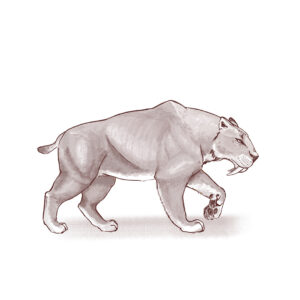
Saber-toothed cat (Smilodon) was another large cat that is commonly found in California tar seep deposits. They were slightly smaller than but just as powerfully muscled as the American lion.
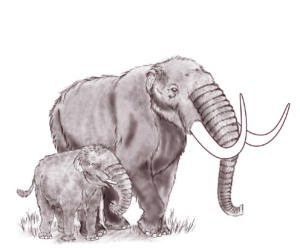
Mastodons (Mammut americanum) are uncommon at McKittrick, and were likely seasonal visitors. They were browsers, and would have found food plentiful in the uplands following the spring rains.

Elk (Cervus canadensis) fossils have been recovered from McKittrick, but they are quite rare. Unfortunately, the remains are fragmentary and not sufficient to tell whether they are from California’s endemic Tule Elk (Cervus canadensis nannodes) population.

Bison antiquus is an extinct species of bison that was larger than the modern bison we see roaming today. They reached up to 6.9 feet (2.1 m) tall, 15 feet (4.6 m) long and weighed 2,249 pounds (1,020 kg). Tip to tip, their horns measured nearly 3.3 feet (1 m) across. Bison antiquus was an herbivore that mostly grazed for food and did some browsing. Grass and leaves were staples in their diet as well as low-growing herbs and shrubs. Common predators of the Bison antiquus included the now extinct saber-toothed cats (Smilodon), American lions (Panthera atrox), and dire wolves (Canis dirus) and even some early human hunters.
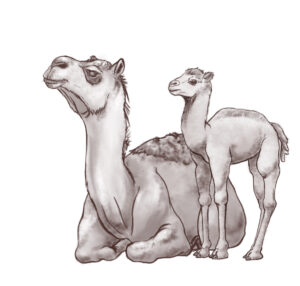
Camels (Camelops hesternus) were once native to North American and are common in ice age deposits throughout the country. Isotope tests have shown that they often ate plants that were adapted to arid environments, much like modern camels.

The teratorns (Teratornis) were giant flying birds that lived during the time of mammoths, giant ground sloths, and dire wolves! Their wingspan reached almost 13 feet, larger than any other flying bird. Despite their scary appearance, teratorns were most likely scavengers, animals who eat other dead animals, much like today’s vultures and condors. It’s a bird, it’s a plane… nope, it’s a teratorn!
Extant species
Insects
Fossilized parts of more than 29 species of insects have been picked out of the tar. Some of these are aquatic types like water striders and diving beetles that lived in nearby streams or ponds. Most are different kinds of ground dwelling beetles like scarab beetles, along with wasps, moths, and even flies and dragonflies.
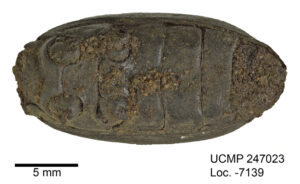
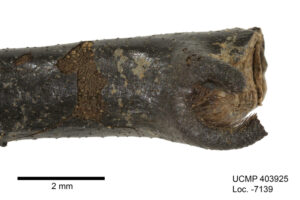
Reptiles
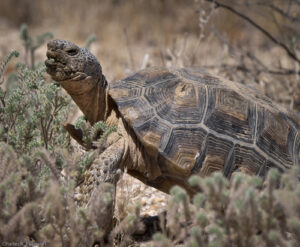
Gopher tortoises (Gopherus agassizii) were present at McKittrick and were about the same size as today, up to 15 inches long. Modern gopher tortoises are adapted to survive in arid landscapes, and still live in California in the Mojave desert.
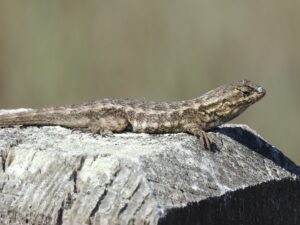
Western fence lizards (Sceloporus), leopard lizards, whiptail lizards and skinks were at McKittrick in the past. These mostly feed on insects and all include many beetles in their diet.
Mammals
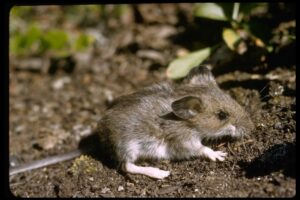
The North American deer mouse (Peromyscus maniculatus) is an extant species of mouse found throughout most of North America. They are 3-4 inches (8-10 cm) long and weigh 0.72 oz (22 g). These mice are omnivores that eat seeds, nuts, fruits, arthropods like spiders and caterpillars, leaves and fungi. Predators of North American deer mice include snakes, owls, mink, weasels, skunks, bobcats, coyotes and foxes.
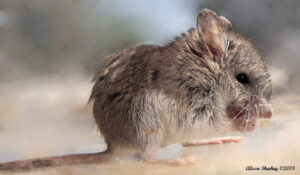
The southern grasshopper mouse or scorpion mouse (Onychomys torridus) is an extant species of mouse found in the South Western United States and Northern Mexico. They are 3.5 to 5.0 inches (8.9–12.7 cm) long and weigh 0.76 oz (22 g). The scorpion mouse is a carnivore that mostly eats arthropods (some of which are highly venemous) such as beetles, grasshoppers, centipedes, crickets, spiders and scorpions. They also eat worms, small vertebrates such as other mice and snakes as well as seeds, plants and vegetables. Common predators of the southern grasshopper mouse are owls and other nocturnal birds of prey, snakes and coyotes.
Birds
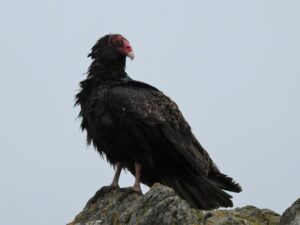
The turkey vulture (Cathartes aura) is an extant bird found from Southern Canada to the southernmost tip of South America. They are 24–32 inches (62–81 cm) long with a wingspan of 63–72 inches (160–183 cm) and weigh 1.8-5.3 pounds (0.8 to 2.41 kg). Turkey vultures are carnivorous scavengers that feed mostly on carrion from a wide variety of small mammals to large grazers, as well as washed up fish, other birds, snakes, etc. They prefer recently dead animals and avoid those that have reached putrefaction. On rare occasions they will feed on plant matter such as shoreline vegetation, pumpkin, coconut as well as live insects and other invertebrates. They also rarely if ever kill prey themselves. Predators of the turkey vulture include other birds of prey such as owls and the golden eagle and occasionally some mammals.
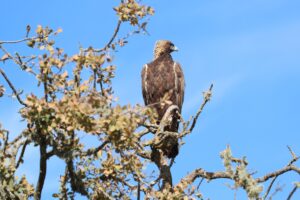
The Golden eagle (Aquila chrysaetos) is an extant bird of prey still found in parts of Eurasia, North America and North Africa. They are 26-40 inches (66-102 cm) long with a wingspan of 5’11”-7’8” (1.8-2.34 m) and weigh 6.6-15 pounds (3-6.8 kg), with the females being larger than the males. These eagles are carnivores that mainly prey on small to medium-sized mammals including hares, rabbits, ground squirrels, prairie dogs and marmots. Black-tailed jackrabbits (Lepus californicus) are a key prey species. They are capable of taking larger bird and mammal prey including cranes, swans, deer, and domestic livestock and have been observed killing coyotes, badgers and bobcats. They also often scavenge or feed on carrion, catch fish, rob nests and steal food from other birds. The adult golden eagle has no natural predators, however, eggs, young and injured birds are susceptible to a range of predators such as other birds of prey, wolves and mountain lions.